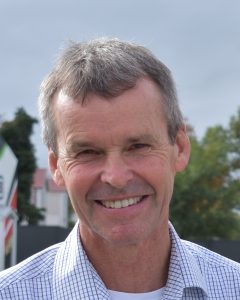2018 tractor and farm machinery sales set new record
Sales of tractors and farm machinery hit a new record in 2018 and there are no signs of a slow down, says NZ Tractor and Machinery Association (TAMA) president, John Tulloch.
TAMA figures to the end of December showed a total of 4640 retail sales across all HP (horsepower) categories compared to 4079 in 2017 and 4062 in the boom dairy year of 2014.
 Mr Tulloch said he expects the strong sales trend to continue through 2019 unless there was a global event that had a sudden impact.
Mr Tulloch said he expects the strong sales trend to continue through 2019 unless there was a global event that had a sudden impact.
“Of course we never know what the weather will throw at us but most of our customers are used to dealing with climate variations, even extreme ones. We’ve had a wet season but that could well be followed by a dry season.”
The dairy industry, which accounts for a large proportion of TAMA sales, was looking to improve based on the last four global dairy trade auctions. The latest auction on January 15 resulted in a GDT price index increase of 4.2%.
The increases were reflecting the flow-on impacts of the European summer drought on local dairy production there, Mr Tulloch said. The current Australian drought would also affect production across the Tasman.
“When global supplies are tight and demand is good then prices have to go up. This would be a welcome relief to our industry after recent difficulties for dairying.”
The improving outlook combined with new environmental restrictions being introduced in New Zealand might see more dairy farmers, especially those in the South Island, move to wintering cows inside.
Under-roof wintering causes less damage to pastures and results in less effluent run-off. It also boosts the condition of dairy cows.
“As profit returns to dairy we expect that farmers will look at the benefits of wintering inside. These cows are in better condition because they don’t have to walk in the cold and are fed a more balanced diet rather than just grass.
A move to inside wintering would be a positive trend for the dairy industry, Mr Tulloch said.
“It benefits farmland and surrounding environs as well as ensuring the cows receive good care. It requires substantial investment but the benefits are clear.”



